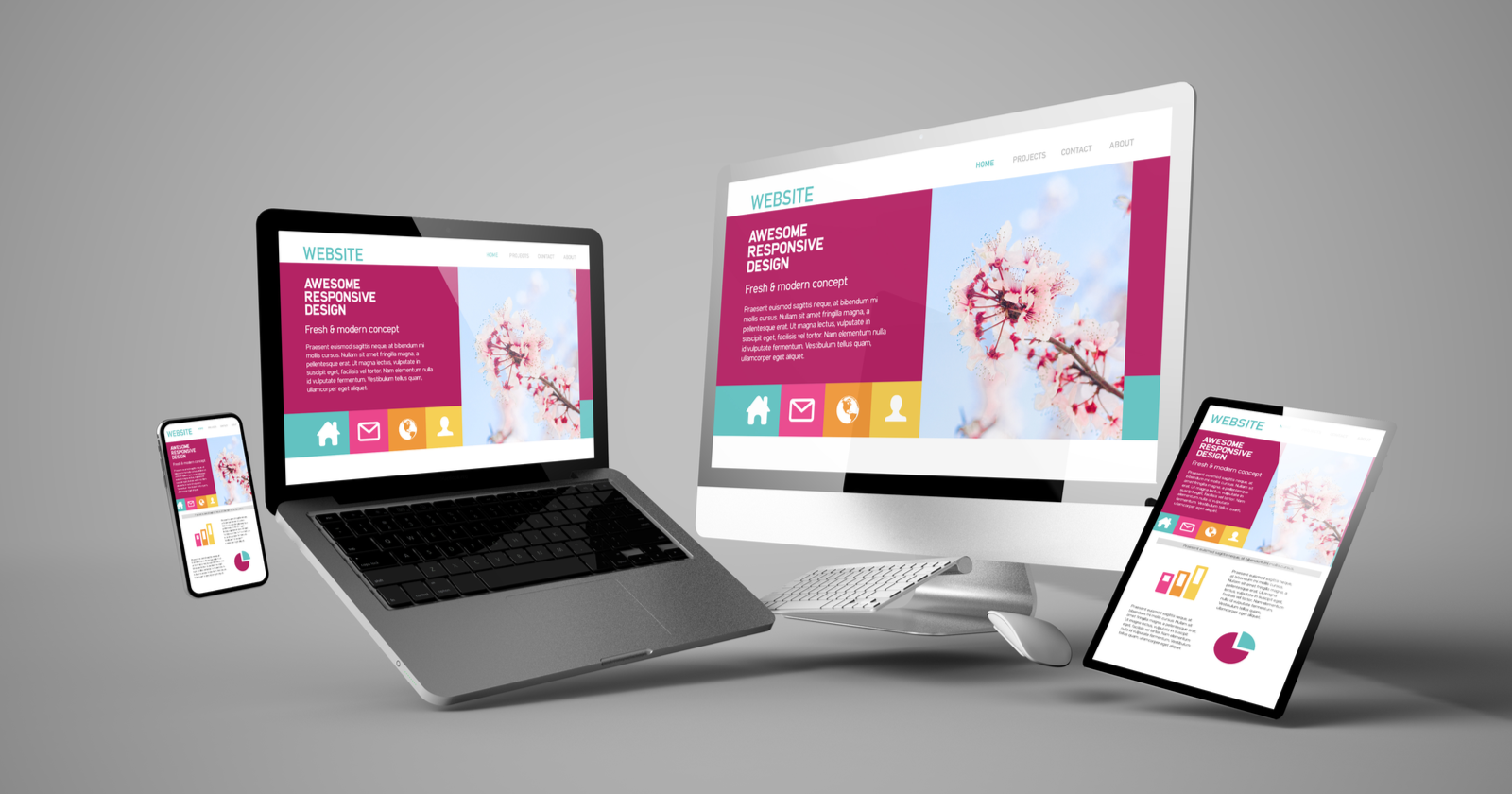Web Design London Ontario for Modern Business Platforms
Wiki Article
Recognizing the Crucial Element That Make up Efficient Website Design Approaches
Recognizing the key aspects can make all the difference in customer engagement and complete satisfaction when it comes to internet layout. You need to ponder facets like instinctive navigation and receptive style to create a seamless experience. But that's simply the start. Each component plays a crucial role in directing customers with your web content and influencing their behavior. Interested regarding what actually drives these techniques? Allow's check out deeper right into these essential aspects.The Relevance of Individual Experience (UX) in Website Design
User experience (UX) is the backbone of efficient website design, shaping just how site visitors connect with your website. When you prioritize UX, you produce an area where users really feel comfortable, involved, and valued. A well-designed UX warranties that your audience can easily navigate your material, find details rapidly, and appreciate their general experience.You needs to consider your individuals' needs and choices, as this understanding directly affects their complete satisfaction. By concentrating on components like load times, mobile responsiveness, and ease of access, you enhance their experience considerably.Moreover, a favorable UX promotes count on and encourages repeat gos to, which can cause higher conversion rates. Bear in mind, individuals won't be reluctant to leave your website for a rival if they run into aggravation or complication. Ultimately, spending in UX isn't practically visual appeals; it has to do with producing a user-centric style that keeps site visitors returning for more.Crafting Intuitive Navigation for Seamless Surfing
When designing a web site, crafting user-friendly navigation is important for assuring visitors can find what they need without disappointment. Begin by arranging your content logically; team related web pages together to aid customers forecast where to locate info. Use clear, concise tags for navigating web links, staying clear of jargon that could confuse your audience.Consider implementing an ordered structure with a main food selection and dropdowns for subcategories, making it simple to drill down into particular topics. Integrate a search bar to encourage individuals to find material straight, particularly on larger sites.Don' t fail to remember regarding mobile customers; identify your navigating continues to be easily accessible on smaller sized screens. Keep it straightforward and regular across all pages to enhance experience. By focusing on these aspects, you'll develop a smooth browsing experience that keeps visitors involved and motivates them to check out more of what you have to supply.Receptive Design: Adapting to Different Instruments
As the range of devices individuals use to access the web remains to expand, guaranteeing your web site is responsive has actually never been much more crucial. A receptive style indicates your site adapts seamlessly to different screen dimensions, from mobile phones to desktops, offering a premium watching experience. This adaptability not just enhances customer complete satisfaction however also boosts your site's performance in online search engine rankings.To create a responsive design, usage flexible grids and formats that instantly get used to the display's dimensions. Execute CSS media queries to customize styles based upon device features. Focus on crucial content, ensuring it's quickly obtainable on smaller screens without frustrating users.The Function of Visual Hierarchy in Effective Layouts
Aesthetic hierarchy is necessary for assisting your target market's focus where it matters most. By efficiently making use of focal points, typography, color, and comparison, you can create a format that interacts your message clearly. Allow's discover exactly how these components interact to enhance your design.Significance of Focal Points
Focal points are vital in internet design, leading individuals' focus to one of the most crucial elements on a web page. By strategically putting these focal points, you develop a clear aesthetic pecking order that improves individual experience. Assume concerning what you desire your visitors to notice initially-- whether it's a call-to-action switch, a crucial image, or substantial information.Using contrast, dimension, and placement, you can attract interest to these centerpieces, making them stick out. Bear in mind, the more prominent the centerpiece, the most likely customers are to engage with it. A well-designed design not just catches interest but additionally leads customers via your material effortlessly, ensuring they soak up the information that matters most. Prioritizing centerpieces is important for efficient communication on your site.Color and Contrast Use
Efficient use of color and comparison can considerably influence just how customers regard your site's content. By picking a shade scheme that lines up with your brand, you develop a psychological link with visitors. High comparison between message and history boosts readability, guaranteeing your message attracts attention. Use contrasting shades to highlight crucial aspects, like call-to-action switches, guiding customers' interest where it matters most.Additionally, equilibrium is essential; too much contrast can be overwhelming, while inadequate might make your content undetectable. Implementing an aesthetic hierarchy with color aids users navigate your website with ease. You want them to conveniently compare headings, subheadings, and body text, which improves their overall experience. Inevitably, efficient shade and comparison usage maintains individuals engaged and encourages them to discover even more.
Typography's Influence on Style
While it's easy to ignore, typography plays a vital role in shaping your web site's style and total individual experience. It establishes a visual power structure that overviews site visitors through your web content. By choosing the right typefaces, sizes, and styles, you can highlight key information and produce a smooth circulation. Utilizing larger headings aids individuals swiftly determine sections, while smaller sized body message supplies comprehensive insights without overwhelming them. Consistent typography not just improves readability however additionally reinforces brand name identity. Keep in mind to stabilize attractive font styles with readability to keep professionalism. Eventually, effective typography guarantees your message resonates, making your web site a lot more interesting and easy to use. Prioritizing this aspect can significantly raise your layout method and influence.Using Engaging Material to Involve Visitors
Exactly how can you keep your site visitors involved and returning for more? The answer hinges on compelling content. Start by recognizing your target market and what passions them. Create helpful posts, fascinating stories, or enjoyable videos that reverberate with their needs. Make use of a conversational tone to make your content relatable; it must seem like a pleasant chat instead than a lecture.Incorporate visuals like infographics, photos, and video clips to break up text and keep things dynamic. Do not forget to invite communication-- ask questions, urge comments, or consist of polls to spark discussions.Also, prioritize quality and conciseness. See to it your primary factors beam through without unneeded jargon or fluff. Remember, quality over amount matters; it's much better to have less, high-impact items than a multitude of sub-par ones. Inevitably, when your web content's appealing, visitors will not only stick around however additionally share it with others.The Influence of Color Psychology on User Interaction
When you select shades for your website, think of exactly how they can affect individual feelings and understandings. Shades can enhance your brand name identity while also making certain access with contrast. Recognizing these elements can substantially boost customer interaction and engagement.Shade Meanings and Emotions
Comprehending shade psychology is crucial for creating an appealing website design, as the shades you choose can stimulate details emotions and affect customer interactions. Various colors can trigger various sensations; as an example, blue usually shares count on and peace, while red can stimulate excitement or seriousness. You assist your users toward wanted activities when you integrate these shades attentively. Yellow can influence optimism and happiness, making it effective for contact us to action, while eco-friendly advertises relaxation and a connection to nature. By aligning your color combination with the emotions you desire to generate, you improve customer experience. Consider your audience and the message you wish to share, guaranteeing your color selections resonate and produce a long-term effect.Brand Identity With Colors

Color Comparison and Accessibility
While choosing a color combination is vital, ensuring appropriate contrast is important for availability. You desire your internet site to be aesthetically appealing, however it needs to also provide to all individuals, consisting of those with visual problems. High comparison in between text and background enhances readability, making it much easier for everyone to engage with your content.Think regarding shade psychology, also. Various colors evoke different emotions and responses. By recognizing how colors effect user communication, you web design london ontario can assist users towards desired actions. Utilizing warm shades can produce necessity, while trendy colors could impart calmness. Constantly test your shade mixes to validate they satisfy access standards, aiding you produce an inclusive experience that resonates with all site visitors.Maximizing Tons Speed for Enhanced Performance
Given that customers expect web sites to fill promptly, maximizing load speed is crucial for improving performance and user complete satisfaction. A slow-loading website can frustrate visitors and drive them away, so you require to do something about it. Beginning by compressing pictures and making use of modern-day layouts like WebP. This can substantially decrease data dimensions without giving up quality.Next, decrease HTTP requests by combining CSS and JavaScript data. Less requests suggest quicker load times (website design london Ontario). Executing careless packing for images and video clips guarantees that material lots only when customers scroll down, boosting initial tons speed.Additionally, take advantage of internet browser caching to keep regularly accessed resources, permitting repeat visitors to enjoy quicker filling times. Lastly, select a trusted holding company. Their performance directly affects your website's rateFrequently Asked Questions
How Can I Determine the Efficiency of My Website Design Approach?
To determine your web layout method's efficiency, track individual involvement metrics like bounce prices, conversion rates, and average session period. Use tools like Google Analytics to collect insights and change your approach based on the information.What Prevail Errors to Avoid in Website Design?
In website design, avoid messy formats, inconsistent fonts, and sluggish loading times (website design london Ontario). Do not ignore mobile responsiveness or disregard individual testing. Focus on availability and assurance clear navigating to improve customer experience and maintain visitors involvedExactly how Typically Should I Update My Site Style?
You need to update your site style every 1 to 2 years, or whenever significant changes happen in your brand name or industry. Routine updates maintain your website fresh, boost user experience, and boost capability.
What Devices Can Aid Analyze User Habits on My Site?
To evaluate user behavior on your website, you can utilize tools like Google Analytics, Hotjar, or Crazy Egg. They'll provide insights right into individual communications, assisting you make educated choices for improving your web site's performance.
Exactly how Do I Choose the Right Font Style for My Web site?
Selecting the ideal typeface for your site includes taking into consideration readability, design, and alignment with your brand. Try out different fonts, verify they're understandable on various tools, and maintain consistency across your pages for a natural appearance. Include a search bar to empower users to locate content directly, especially on larger sites.Don' t neglect concerning mobile customers; identify your navigating stays obtainable on smaller sized screens. Reliable usage of shade and contrast can significantly affect just how users view your site's content (website design london Ontario). Understanding shade psychology is important for creating an appealing internet layout, as the colors you choose can stimulate particular emotions and influence individual interactions. By recognizing how shades impact customer interaction, you can direct customers towards wanted activities. Since users expect sites to fill rapidly, optimizing tons rate is crucial for enhancing performance and customer satisfactionReport this wiki page